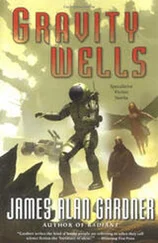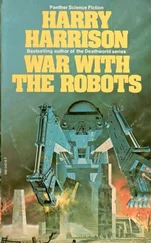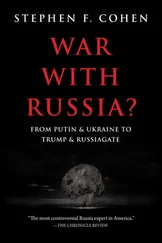It was warm inside the control room and there was an overriding smell of men’s sweat, usual in a submarine that had been at sea for days. In common with all the crew, Chernavin wore blue, flashproof cotton trousers, trainers and a faded, sweat-stained, blue-and-white striped telnyashka , the long-sleeved undershirt, a legacy of the Tsarist navy; beloved by the submariners of the Russian Navy and considered the mark of elite forces.
The control room was silent and Chernavin suppressed the adrenalin that coursed through his body. Drilled into him as a submariner at a moment like this was the need to stay ruthlessly calm, to calculate the odds like a mathematician or a five-dimensional chess player. There was no other way, if he and his crew were to first succeed and then survive. In a moment he would chance a look through the smaller attack periscope, but now was the time to compute and anticipate the surface picture, to visualize what was happening on the sea above them and to prioritize what he needed to see. Then, when he raised the periscope above the surface, he would know in advance what he wanted to look at. Minimizing the time the periscope poked its tiny head above the waves was the best way of limiting the chance of being spotted by the radars, or the keen eyes of the enemy lookouts.
If he was now hesitating, it was because Krasnokamensk was within close torpedo range of something very much larger than anything Chernavin had ever contacted before, even in training against the biggest ships in the Russian fleet. A well-trained Russian submarine sonar operator would usually have added the type and class of ship, perhaps even its name, logged as a result of the detailed data built up over many years of monitoring NATO exercises and studying the specific noise signatures of different ships. But Queen Elizabeth was so new on the scene that no one had yet logged her characteristics.
If I screw up now, the Navy won’t forgive me after all the time and effort they’ve spent on training me.
Chernavin was a realist, a product of his upbringing as the son of an agricultural worker on a collective farm near Moscow. However, for a moment, he felt a sense of destiny. It was as he had read in novels; that everything in his life had somehow been designed to bring him to this point. Chernavin had excelled at school, particularly at mathematics and physics, and been selected for officer training in the Russian Navy in the dark days after the collapse of the Soviet Union. He had first served in the Northern Fleet, when Murmansk had been full of rusting submarine hulks, the detritus of a once-proud navy and a source of shame to those who operated them. However, times had thankfully changed and Russia had rediscovered her pride under the President, under whose personal direction her navy was being re-equipped.
Meanwhile, through persistence, hard work and skill, Chernavin had demonstrated his competence in the black arts of the submariner and been rewarded with the Krasnokamensk . After two years in command, she was a tight ship with a well-trained crew and now was his time. He’d monitored many NATO exercises, followed the UK’s Trident nuclear submarines close into Faslane—particularly after the demise of Britain’s maritime patrol aircraft had allowed the Russian submarine fleet to go where they had never been able to before—but he had never come up against anything like the contact the sonar operator had been tracking for the past hour. It was huge and he knew he had to get eyes on it, however fleetingly.
The nearest he had come to it, sonar and acoustics-wise, were the vast cruise liners so beloved of elderly Westerners. So, before proceeding, he first needed to see his target. He also knew that the golden rule for submariners was “don’t be counter-detected.” If the enemy found Krasnokamensk , they would be meat for the crabs, crushed to death by the pressure of multiple underwater explosions as vengeful escort frigates rained down depth charges on them.
But Chernavin was now worrying about those escorts. Krasnokamensk ’s sonar had indicated that they had come close to a destroyer, almost certainly one of the Royal Navy’s new Type 45s, operating a sonar buoy with its anti-submarine helicopter. But they’d dived and applied a sprint-and-drift maneuver to give it the slip, running deep at maximum speed of 17 knots for fifteen to twenty minutes before drifting at five knots to minimize the sound of the submarine’s engines, in order to throw the British sonar off the trail.
But the enemy escorts had to be near. Any large, capital ship would have them in profusion, particularly the flagship of an amphibious group. In the Russian Navy, it would be deemed criminal negligence to put to sea without proper defense in depth, so the others must be out there somewhere. But there appeared to be nothing.
Surely, it can’t be so easy? Chernavin thought to himself. It must be a trap .
The orders from HQ Baltic Fleet operations on the last occasion he had surfaced and picked up a radio signal were unambiguous. A British amphibious task group was expected in the western Baltic. He was to get close enough to track it. Furthermore, it was the direction of the President himself, repeated so there could be no mistake, that if the opportunity for a hard, killer blow against the NATO aggressors presented itself, it was his duty to take it. To Chernavin, the President’s order could not be clearer: if he had the chance, it was his duty to sink the new British super carrier Queen Elizabeth .
The silence in the control room was broken by one of the sonar operators: “Range of unidentified contact now 10,000 meters. Contact appears to be zigzagging at speed.”
Meanwhile, the monotonous tone of the planesman started to call the depth as the submarine surfaced steadily from its operating depth of 200 meters: “Fifty, forty, thirty, twenty… Approaching periscope depth. Periscope depth… Now.”
“Hold her there,” ordered Chernavin. “Up periscope.” And, leaning down, he grabbed the handles of the periscope as it slid up to him. Before it had even reached knee level he was down, squatting on his haunches, anxious to get his eyes to the viewfinder and so make the most of every precious second to look at the contact.
He was too experienced a submariner to need to waste any time adjusting his eyes to the lenses of the viewfinder, so he saw her instantly: HMS Queen Elizabeth , with her vast deck, the ski jump in the bow and the twin islands on the starboard side. Despite being five nautical miles away, she was magnified by the powerful lenses of the periscope and the great ship seemed to fill the viewfinder.
“Down periscope. Flood torpedo tubes one to three. Stand by to fire,” ordered Chernavin. There was a whoosh as the periscope disappeared into its mast well in the deck of the control room.
Then he turned and looked at his Executive Officer, still standing behind him. “Confirm visual sighting of British carrier, Queen Elizabeth ,” Chernavin said.
The Executive Officer stepped forward. “Up periscope.”
Like his captain, he squatted as it rose so that he could gain maximum time at the viewfinder. A five-second look was enough. “Down periscope.”
Chernavin looked inquiringly at him.
“Confirmed,” came the response.
The tension in the submarine was touchable. Chernavin took a deep breath and, for a moment, he felt a deep calm as time seemed to stand still. Then the reality of the moment hit him. What he was about to do would go down as an event of the magnitude of the sinking of HMS Royal Oak , the pride of the Royal Navy’s Home Fleet, by a German U-boat in Scapa Flow in October 1939. Or the sinking of the mighty battleships Repulse and Prince of Wales by Japanese dive bombers in 1941, an event that changed the course of the war in the Far East. And now, HMS Queen Elizabeth , the largest ship ever built for the Royal Navy, was about to join them and he, Captain of the Second Rank, Alexander Ivanovich Chernavin of the Russian Navy, would be the man responsible.
Читать дальше












